The High Line or High Line Park is a place I really recommend if you come to visit New York.
Why? Because this aerial park located in the western district of Manhattan is unique!
It actually follows the route of an old aerial railway.
For me, the New York High Line is really one of the must-sees in the Big Apple.
Destined to be destroyed, it was instead transformed into a hybrid suspended park – a favourite walk for New Yorkers and tourists both. What I love about the High Line is that locals come to relax, sunbathe or just walk and enjoy a piece of nature with spectacular views of Manhattan !
Nearly 5 million people (New Yorkers and tourists) visit the High Line every year.
I'll tell you more about it in this article. Are you ready? Let's go!
HISTOry of the HIGH LINE
In the 19th century, goods trains regularly passed over the New York Central Railroad tracks to deliver goods to lower Manhattan. The problem was that the traffic of these trains endangered pedestrians to such an extent that 10th Avenue was nicknamed "Death Avenue".
In the 1920s, men on horseback (the West Side Cowboys) were hired to warn of the trains' arrival (they waved red flags). However, fatal accidents continued to occur.
In 1924, the decision was made to remove these tracks and create an elevated railway line (10 metres above the ground). But it wasn't until 1929 that the West Side Improvement Project (designed by Robert Moses, a great New York urban planner) was born: an elevated railway line of 21 km would be built – the "West Side Elevated Highway".
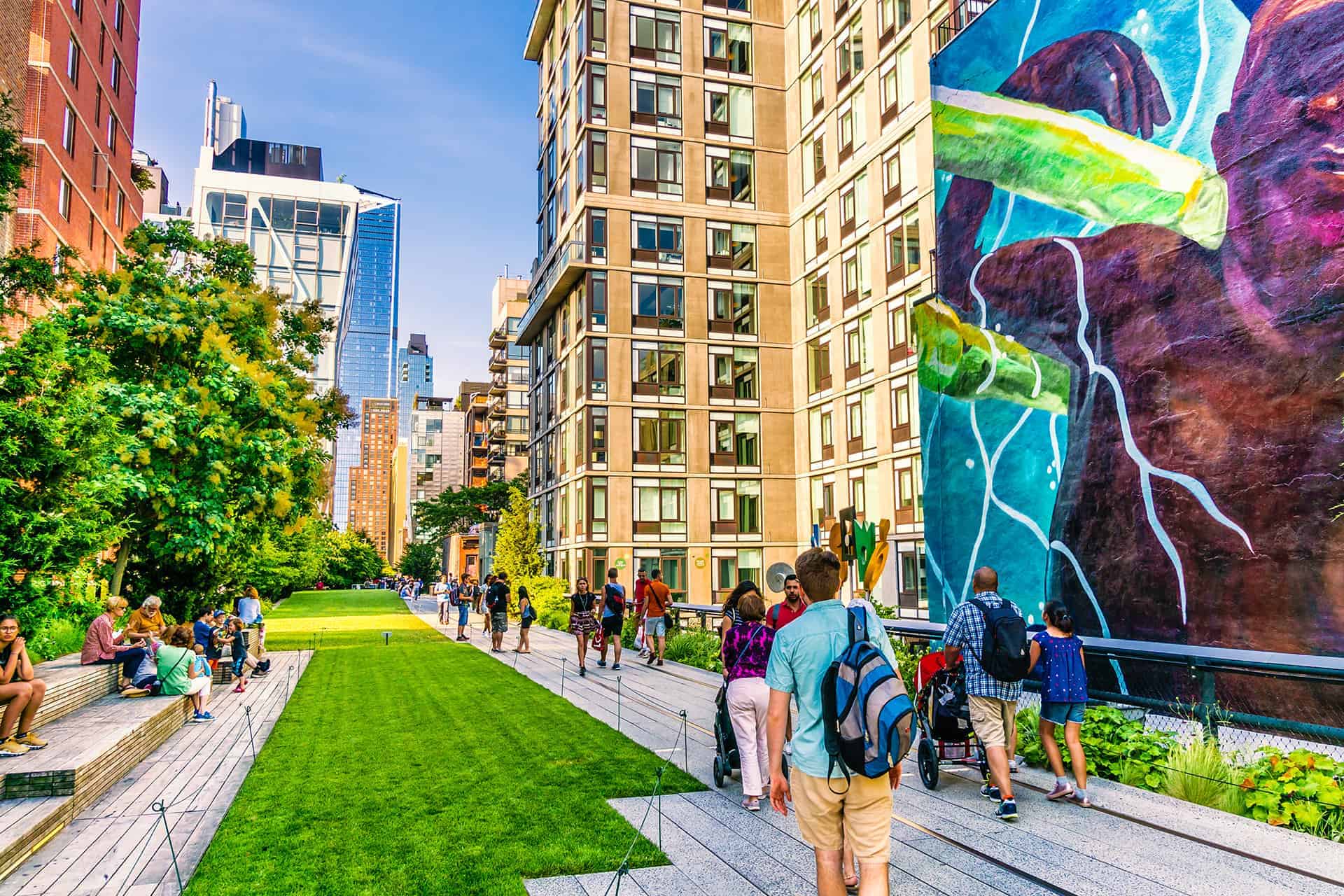
Construction began in 1930 and the first train ran in 1933. The line then became operational and very practical: trains carrying tons of goods had easier and direct access to the warehouses of factories along the route, such as the National Biscuit Company (aka "Nabisco"), now known as “Chelsea Market”.
In the 1960s, lorry traffic increased and led to the demolition of the southernmost section of the High Line. Train traffic came to a complete halt in the 1980s. The line became disused and the area completely overgrown.
Calls for the total demolition of the structure were soon made. While this was being considered (under Rudy Giuliani), two local residents, Joshua David and Robert Hammond, fought to save the structure so that it could become a public space that New Yorkers could use. The idea was to create a kind of park like the "Coulée verte René-Dumont" (a 4.8 kilometre long park created in 1993, and located in the 12th arrondissement of Paris). Only difference, the park in New York would be suspended.
In 1999, they created a non-profit association, "Friends of the High Line", and mobilisation was such that in 2004, the new mayor, Michael Bloomberg, granted funding for the site’s development.
A competition for ideas was then launched. Landscape architecture firm James Corner Field Operations, associated studio Diller Scofidio + Renfro and landscape architect Piet Oudolf were selected to transform the High Line.
The development of the railway line, divided into 3 sections, started in 2006. The structure was repaired, repainted and a number of access points were built along the path to allow residents to enter the park. The first section was opened in 2009, the second in 2011 and the last in 2014.
The High Line is managed by the New York City Department of Parks and Recreation, in partnership with the Friends of the High Line association, which is responsible for its maintenance and preservation.
The history of the High Line is rich and important to New York City, and this mythical place is ideal for a guided tour to learn more about it. In addition to the High Line, you will discover other places such as the Chelsea market or the chic Meatpacking District. By taking a guided tour, you will walk along the High Line and its surroundings.
IMPACT of the HIGH LIGNE on the city
The redevelopment of the railway line had a real impact on the city. The High Line revitalised the surrounding areas and led to real estate and urban development. Since 2009, some projects have been completed, while others are still under construction. Some districts, such as Chelsea, have even experienced a true "rebirth".
It should be noted that the price of housing in the area has risen, as have rental prices. A flat on the High Line can sell for millions of dollars and renting one can cost you twice as much as an identical flat further away.
The High Line also has an ecological impact on New York. It has been dubbed "the world's longest green roof / the world's longest green terrace". In addition to being a beautiful green space for New Yorkers, it plays a major role in bringing nature back to the city. Indeed, it is home to many plant species as well as birds and insects. It also provides shade, refreshes the air and brings oxygen.
The plants, selected for their ornamental potential and hardiness, are cut by hand (by gardeners and volunteers) and reused as compost for the soil. No pesticides are used, fertilisers are natural and watering is done with rainwater.
Gardening and maintenance products are non-toxic to support the survival of the plants and animals that have taken up residence there. Even the wood used for the layout of the spaces has been specially chosen for its durability (it is "Green Ebony", certified FSC – "For a responsible management of forests").
Even the lighting has been studied so that it has no impact on the people living in the vicinity: The solar panel-powered lights (LEDs) face downwards.
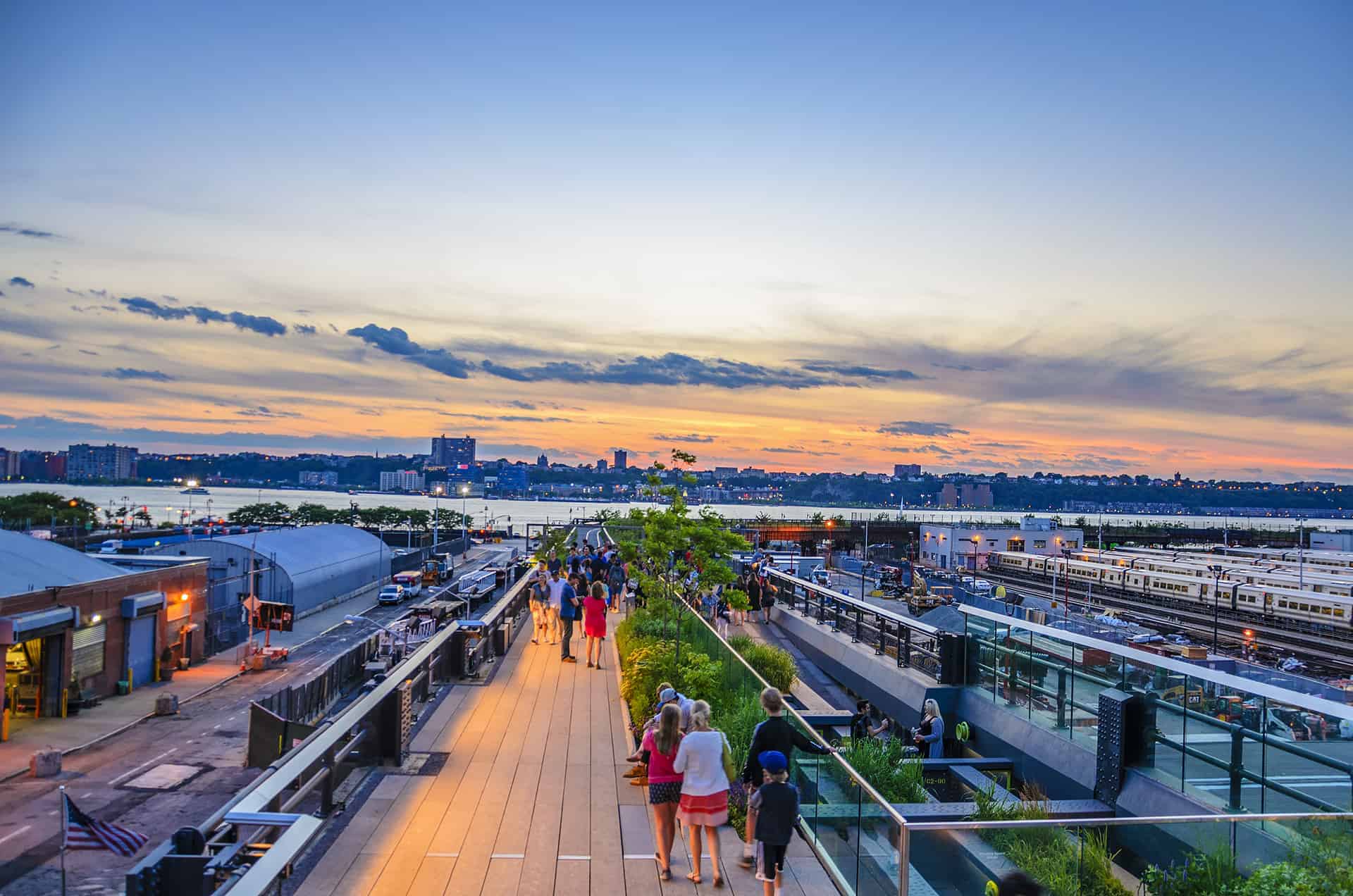
Where is the HIGH LINE ?
The High Line stretches for 2.3 km along the Hudson River, from Gansevoort Street and Washington Street to 34th Street.
The promenade runs through several parts of West Manhattan (22 blocks) and connects the Meatpacking District to Hell's Kitchen via Chelsea and Hudson Yards.
WHAT ARE THE OPENING HOURS OF THE HIGH LINE?
The High Line is open every day of the year from:
- 7 a.m. to 10 p.m. in spring (1 April - 31 May)
- 7 a.m. to 11 p.m. in summer (1 June - 30 September)
- 7 a.m. to 10 p.m. in autumn (1 October - 30 November)
- 7 a.m. to 7 p.m. in winter (1 December - 1 March – except when it snows, for safety reasons)
During the week, when the weather is nice, the place is very popular with New Yorkers who like to come here for lunch.
On weekends, you'll see mostly locals enjoying the park.
HOW TO GET TO THE HIGH LINE?
You can get to the High Line by:
- the underground: lines A, C, E, 1, 2, 3, 7;
- bus: lines M11, M14, M23, M34.
The High Line is accessible (for FREE) via various access points. Stairs, footbridges, ramps and lifts have been installed at regular intervals along the way.
People with reduced mobility (in wheelchairs) and pushchairs can also access the park from Gansevoort Street, 14th, 16th, 23rd, 30th and 34th Streets.
WHAT CAN YOU DO ON THE HIGH LINE?
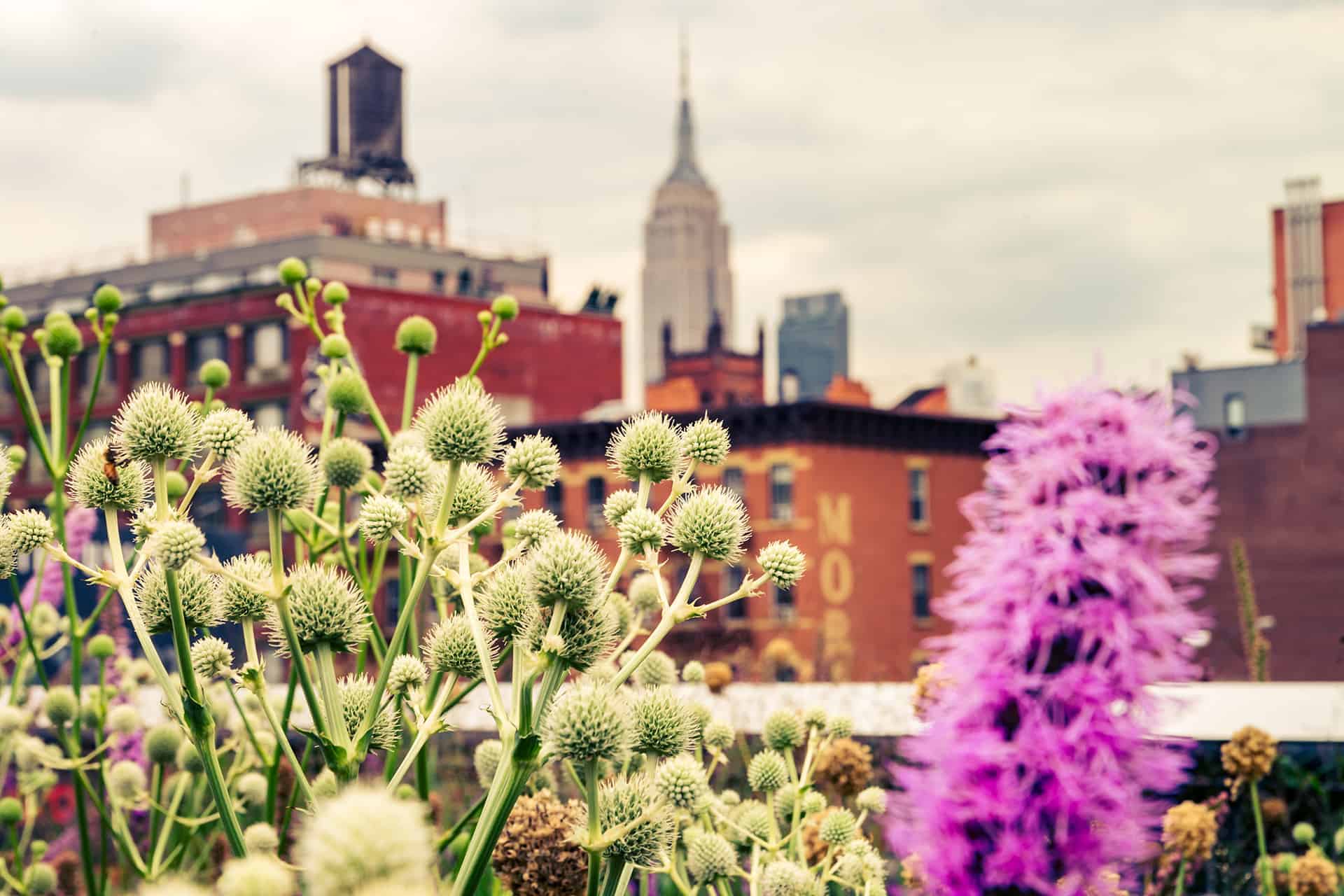
The best way to experience the High Line is to walk along it and explore its every corner. Along the walk you will find gardens, benches and picnic tables. You will also see works of art.
It doesn't really matter which way you walk; however, if it’s morning I would advise you to start from the north and walk south, so that you have the sun at your back. This will allow you to take some nice pictures. In the afternoon, obviously, it’s better to start from the south and walk north, for the same reason!
Several activities are possible on the High Line. Some of them are free, others are not.
You can, among others:
- admire the view
- run around
- sunbathe on the wooden deckchairs
- take a guided tour
- have a picnic in the designated areas
- take a class: pilates, yoga, urban planning, dance...
- watch the birds in their nesting boxes
- enjoy the temporary art exhibitions
GUIDED TOURS
Guided tours of the High Line take place regularly. They allow you to learn more about its history, its plantations, its maintenance. You can even visit the White Star Pier, which is dedicated to the ships of the White Star Line.
If the Titanic had not sunk, it would have been moored on this pier – the survivors of the sinking actually disembarked there.
There is also the old Nabisco factory, where Oreo biscuits were made before.
In addition to the High Line, guided tours will often include the chic Meatpacking District and the famous Chelsea Market in their route.
From May to October, a free guided tour is available on Tuesdays at 6.30 p.m. and Saturdays at 10 a.m. (the Tuesday Tour). A tip: if you want to do the tour with the guide and learn lots of information about the High Line, make sure to come early, for only 40 people can participate.
By the way, if you want to learn more about the plants and flowers of the High Line, opt for a guided tour with a botanist instead.
DISCOVER THE PLANTS GROWN ON THE HIGH LINE
It was necessary to recreate a certain emotion and make the walk a unique space, recreating nature. The goal was to create a sense of wonder in the visitors.
The gardens designers therefore drew much inspiration from the wild landscape of the High Line in the years before the park was built. They also chose the gardens’ 500 species of plants, shrubs and grasses for their hardiness and durability over the four seasons of the year.
You won't find the same types of plants in the HighLine’s shaded areas and wetlands, for example.
The gardens are constantly maintained by a team of gardeners. Throughout the year, they create different atmospheres, bringing in different plant species. If you want to see the High Line in beautiful colours, it is best to go to New York in autumn or spring.
You can even help them by participating in volunteer work!
ENJOY INCREDIBLE VIEWS
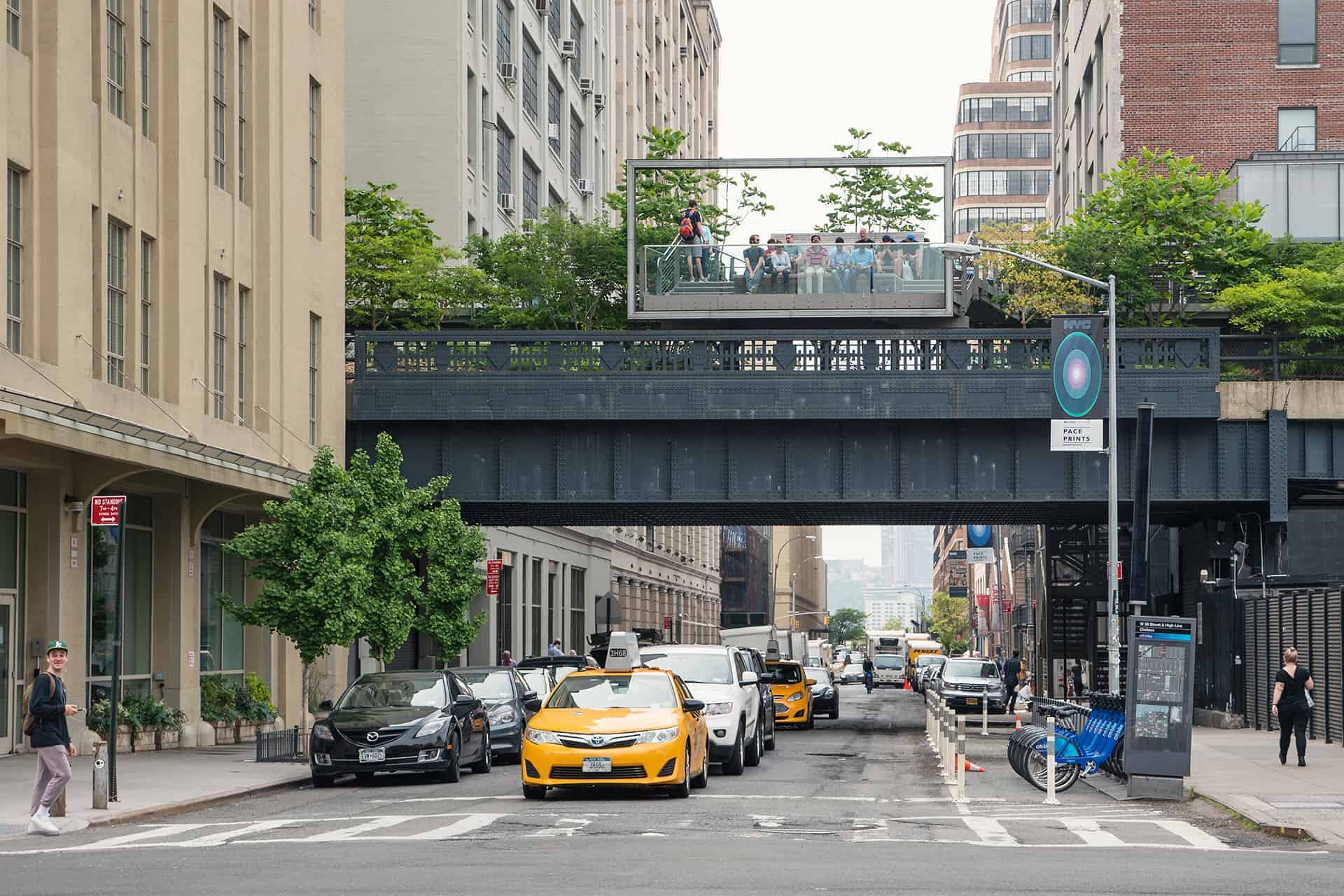
There is no shortage of views of the New York landscape from the High Line and some places are more magical than others.
Along your walk, you can see the Hudson River, the New Jersey shoreline or the NY docks.
You can also see the l’Empire State Building from 18th Street and discover the Meatpacking district from Gansevoort Street. Additionally, there is The Vessel (an observatory in Hudson Yards) to the north, the Whitney Museum of American Art to the south, and the Standard Hotel (a glass design hotel in the Meatpacking District).
The High Line also has small amphitheatres from where you can get even better views. For example, you will find a lovely lookout at 17th Street, overlooking 10th Avenue. You can sit there and take advantage of the large windows to get a nice view of the passers-by.
Other places not to be missed are:
- the view of the Tiffany & Co. foundation on Gansevoort Street (east of the Whitney Museum): from this balcony you can see where the southern end of the High Line was cut through in the 1980s;
- the view of the vineyards, the red brick building of the last meat packing plant in the Meatpacking District and the Standard High Line between Gansevoort Street and 13th Street;
- the view of the former Nabisco factory (National Biscuit Company, now home to Chelsea Market) where Oreos were invented, between 15th and 16th Streets;
- the view of the treetops on a path higher than the others between 25th and 27th Streets;
- the 360° view of the Hudson River and the city from the temporary footbridge between 30th and 34th Streets…
You can also admire the large and monumental works of art at Spur, between 30th Street and 10th Avenue, and the original steel girders of the High Line at 30th Street.
Finally, don't forget to check out the High Line Channel 14 outdoor art and history screening at 14th Street Passage (between 14th and 15th Streets) after dark.
Note that at night, you will have a completely different view from the High Line.
Take the opportunity to see the sun set over the Hudson!
TAKE ADVANTAGE OF THE VARIOUS PROGRAMMES
The High Line is a real platform for art. The promenade is a kind of open-air theatre where many New York artists present their works and performances (contemporary art, design, dance exhibitions...) throughout the year.
Numerous cultural and social programmes and events are scheduled throughout the year on the High Line. They are free and open to all (children, teenagers, families…).
To find out about them, you can go to https://www.thehighline.org/visit/ or follow the various programmes on the High Line:
- Family Programs
- Garden Programs
- History Programs
- Art Programs
Are there any prohibitions?
On the High Line it is forbidden to:
- walk on the lawn
- pick flowers/plants
- walk your dog (their urine is harmful to the plants)
- cycle, rollerblade, skateboard
- drink alcohol (except in authorised areas)
- smoke
- litter
- play/listen to music too loud
- sell food
- film or take photos if you are in an exclusive area (unless authorised)
- gather with more than 20 people (unless authorised)
ADDITIONAL INFORMATION TO KNOW
Toilets can be found at 16th Street and at Gansevoort Street.
There are water fountains at the same locations as well as at 18th Street, 23rd Street and 30th Street.
You can cool your feet in the footbaths between 14th and 15th Streets and sit and picnic on the steps and lawn at 23rd Street.
Want to know more about the High Line? Download the High Line app, available on iOS and Android. It will give you lots of useful information about the park (history, art, gardens...).
Today, many cities in the US (Philadelphia, Atlanta, Chicago) and around the world are considering renovating their old railways to create elevated promenades or linear parks inspired by the High Line.

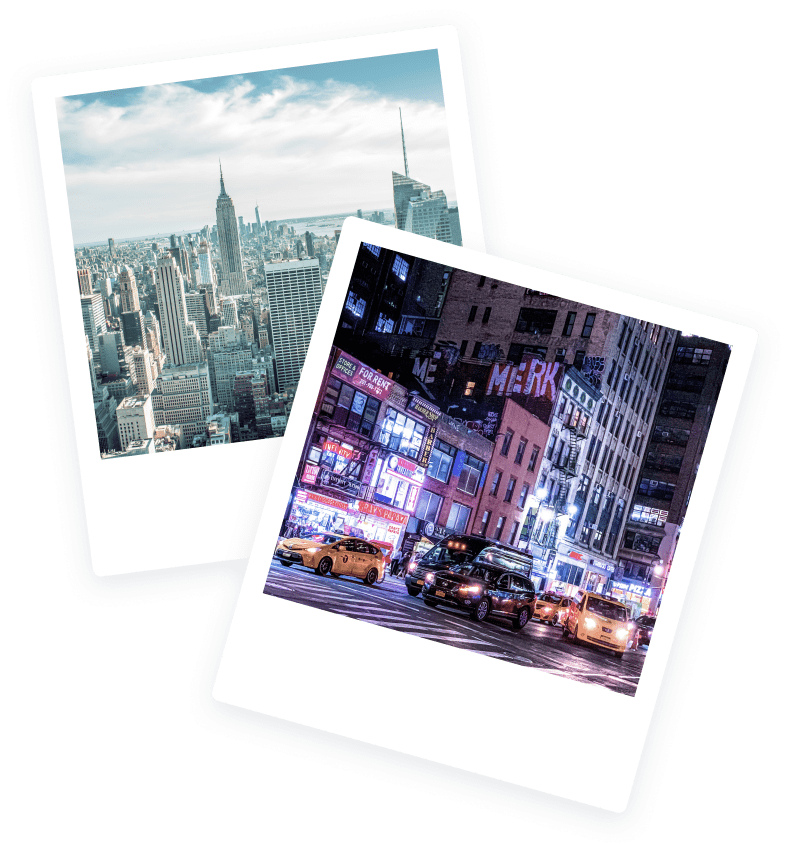
0 Comments